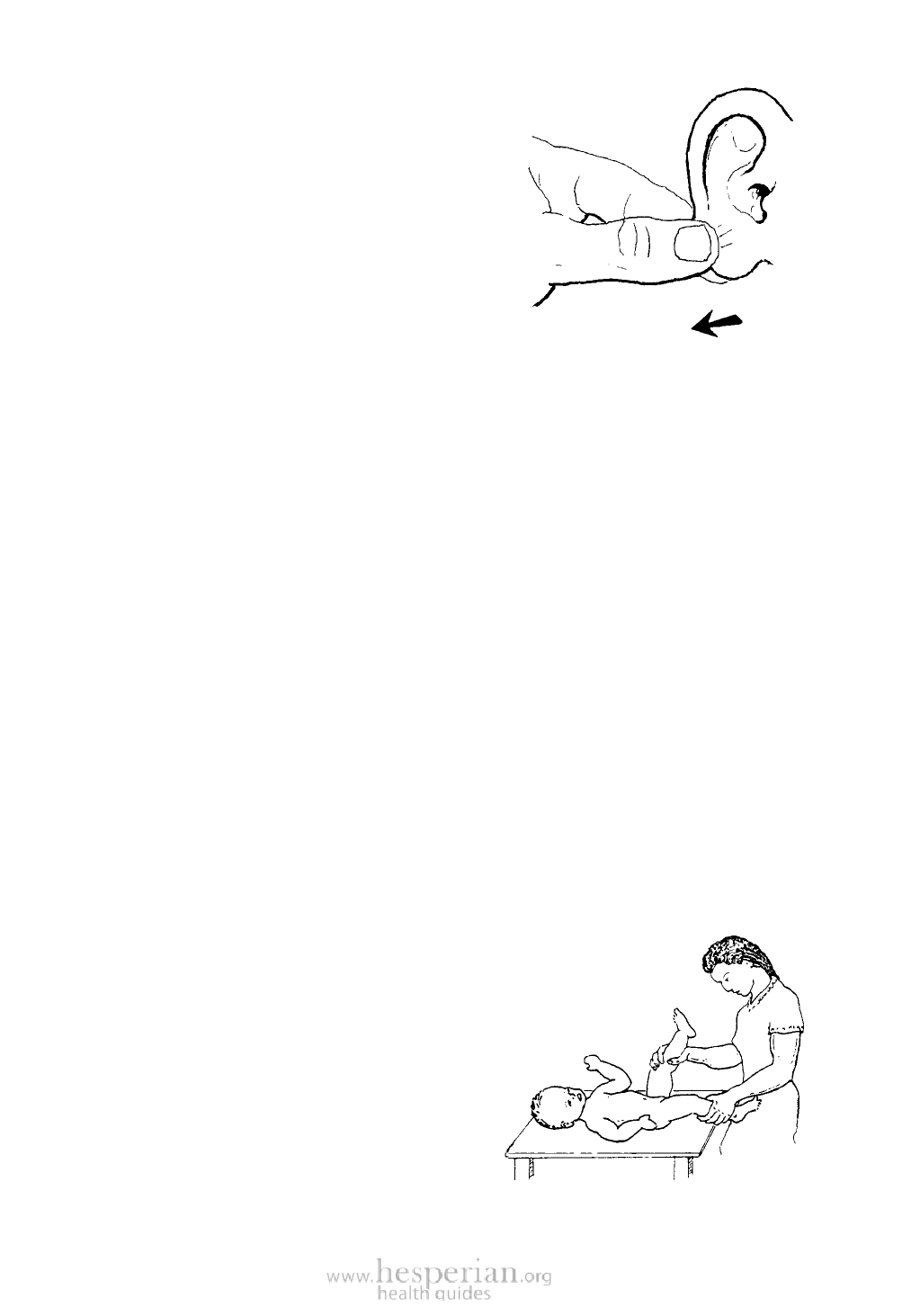
34 Where There Is No Doctor 2011
EARS, THROAT, AND NOSE
Ears: Always check for signs of pain and
infection in the ears-especially in a child with fever
or a cold. A baby who cries a lot or pulls at his ear
often has an ear infection (p. 309).
Pull the ear gently. If this increases pain, the
infection is probably in the tube of the ear (ear
canal). Also look for redness or pus inside the ear.
A small flashlight or penlight will help. But never
put a stick, wire, or other hard object inside the ear.
Find out if the person hears well, or if one side is
more deaf than the other. Rub your thumb and fingers together near the person’s ear to
see if he can hear it. For deafness and ringing of the ears see page 327.
Throat and Mouth: With a torch (flashlight) or sunlight examine the mouth and
throat. To do this hold down tongue with a spoon handle or have the person say
‘ahhhhh...’ Notice if the throat is red and if the tonsils (2 lumps at the back of the throat)
are swollen or have spots with pus (see p. 309). Also examine the mouth for sores,
inflamed gums, sore tongue, rotten or abscessed teeth and other problems. (Read
Chapter 17.)
Nose: Is the nose runny or plugged? (Notice if and how a baby breathes through
his nose.) Shine a light inside and look for mucus, pus, blood; also look for redness,
swelling, or bad smell. Check for signs of sinus trouble or hayfever (p. 165).
SKIN
It is important to examine the sick person’s whole body, no matter how mild the
sickness may seem. Babies and children should be undressed completely. Look
carefully for anything that is not normal, including:
• sores, wounds, or splinters
• rashes or welts
• spots, patches, or any unusual markings • abnormal lumps or masses
• inflammation (sign of infection with
redness, heat, pain and swelling)
• unusual thinning or loss of hair, or
loss of its color or shine (p. 112)
• swelling or puffiness
• loss of eyebrows
• swollen lymph nodes (little lumps in the
(leprosy? p. 191)
neck, the armpits, or the groin, see p. 88)
Always examine little children between the
buttocks, in the genital area, between the fingers
and toes, behind the ears, and in the hair (for
lice, scabies, ringworm, rashes, and sores).
For identification of different skin
problems, see pages 196 -198.